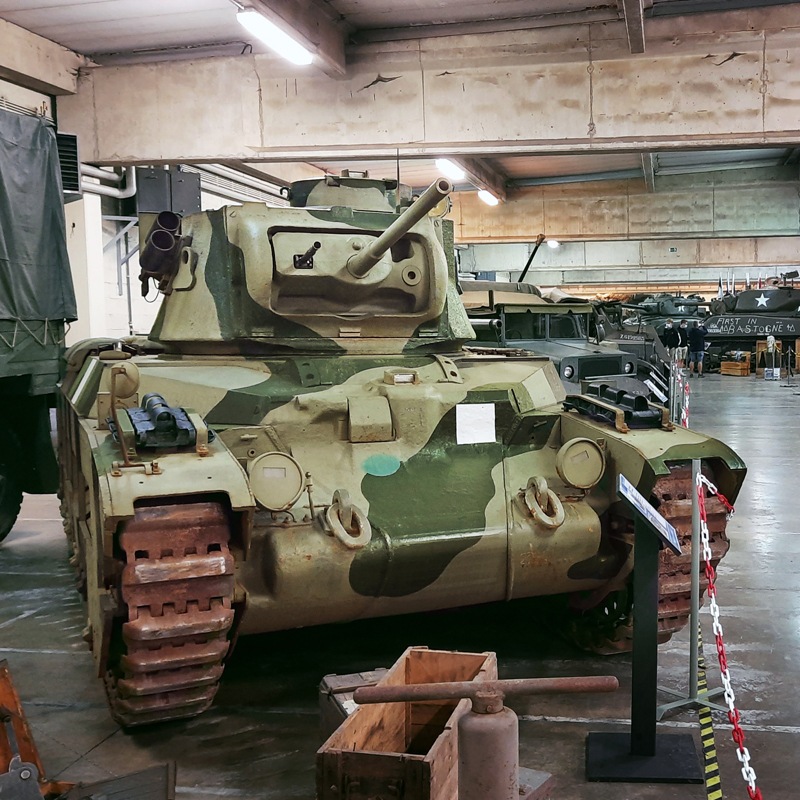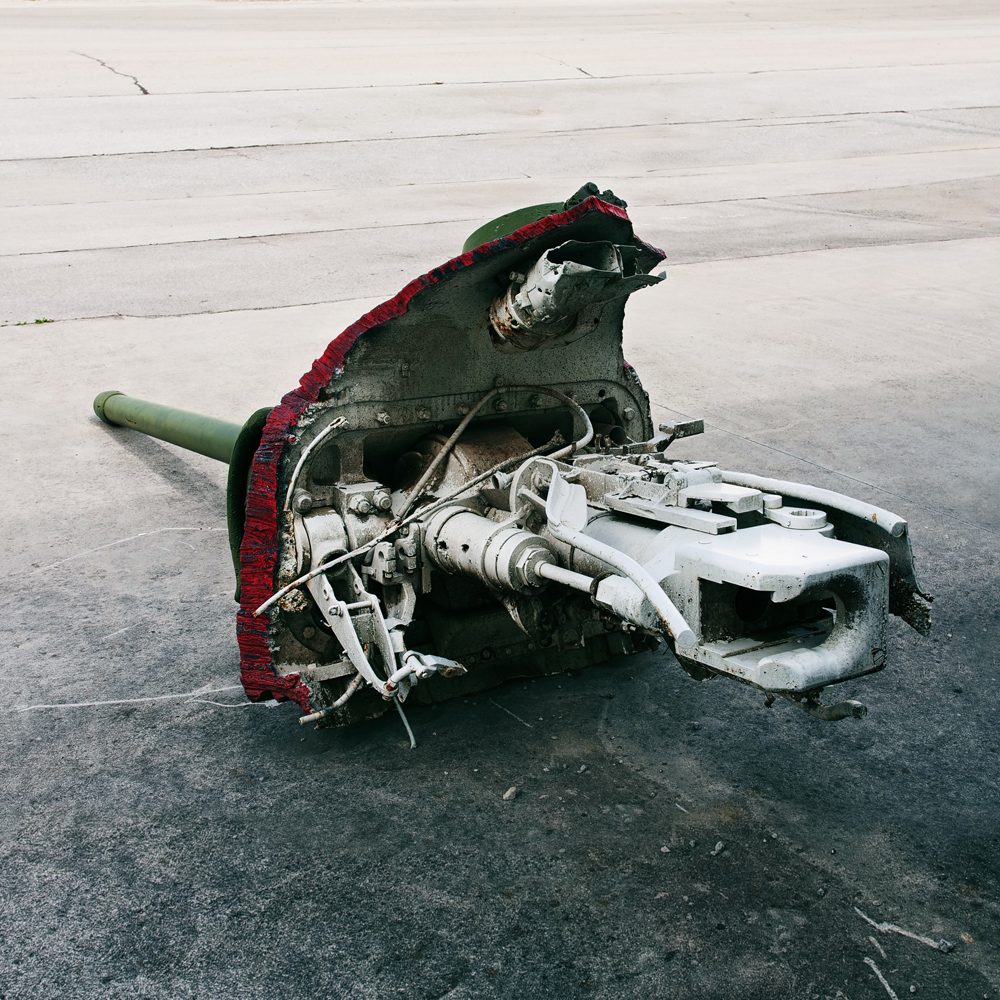Type: Infantry Tank
Nation: United Kingdom
Period: World War 2
Location: Bastogne Barracks, Belgium

In the 1930s three different tank concepts were developed in Great Britain: Light tanks for reconnaissance, heavily armoured infantry tanks to support attacks on enemy positions and maneuverable cruiser tanks to exploit these gaps. The Matilda II was of the second type, had up to 78 mm of frontal armour (thicker than any other tank at the time) and caused the Axis troops some serious headaches in France 1940 and during the early North Africa campaign.
Matilda II was powered by two 95 hp bus engines that were coupled together. Since infantry tanks only had to keep up with foot soldiers, off-road top speed was a meagre 10 km/h. But at least the tank could run on one engine if the other one decided to stop working.
Its predecessor Infantry Tank Mk I A11 Matilda (allegedly named after a cartoon duck) was widely considered a failure, but Matilda II was such a solid design that it became the only British tank to serve from the beginning to the end of World War 2 – in the later years mostly with the Australians in the Pacific theatre.

7 responses to “Infantry Tank Mk II A12 Matilda Mk III”
[…] ways to destroy T-34s – just like they had done a year earlier when they had faced the tough Matilda IIs and Char B1 bis in France. Of course, the high losses of early T-34s were not only caused by the […]
LikeLike
[…] The basic M3 was a riveted construction with a Wright R-975 Whirlwind radial engine which gave the tank an awkwardly high silhouette. Combined with the 75 mm gun’s low position and limited traverse, this proved to be a major disadvantage on the battlefield. On the other hand, the six Grant crewmen were working in a relatively roomy fighting compartment and the vehicle was much more mechanically reliable than previous British tanks such as the Crusader and the Matilda. […]
LikeLike
[…] this quality since they had been struggling to keep their indigenous tanks such as the Crusader and Matilda operational in the rough desert conditions. Because Winston Churchill was allegedly not very good […]
LikeLike
[…] tanks (such as the Crusader, Cromwell and Comet) and heavy infantry tanks such as the Matilda, Matilda II, Valentine and Churchill. Combining the merits of both classes, the Centurion was one of the first […]
LikeLike
[…] a proper cannon to be effective, only 140 Matildas were built. Work on the much-improved successor Matilda II had begun already before the Matilda I entered […]
LikeLike
[…] 27-ton Matilda II was one of the most heavily armoured tanks of its time, comparable only to the French Char B1 bis. […]
LikeLike
[…] Matilda Canal Defence Light was one of the “Funnies” that have been made famous by Percy Hobart’s […]
LikeLike